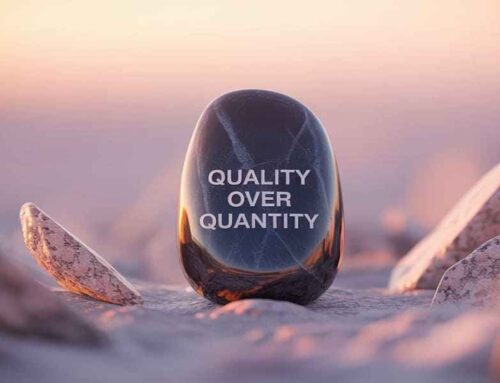
Good to Great
“Good to Great: Why Some Companies Make the Leap… and Others Don’t” is a groundbreaking book by Jim Collins that explores why some companies transition from being merely good to truly great, while others fail to do so.
Jim Collins and his research team undertook a five-year study to identify the factors that differentiate companies that have made a sustained leap to greatness. This comprehensive investigation resulted in actionable insights for businesses striving to achieve long-term excellence.
The Good-to-Great Companies
Collins’ team initially identified a pool of public companies and narrowed them down to a selection of 11 that made the leap from good to great, sustaining that excellence over a period of at least 15 years.
The companies studied included Walgreens, Kimberly-Clark and Gillette. These companies were then analyzed in comparison to similar firms that failed to achieve similar greatness, referred to as the “Comparison Companies.”
Level 5 Leadership
A key discovery was the concept of Level 5 Leadership. Jim Collins described leaders of the great companies as possessing a rare combination of personal humility and professional will. These leaders are fiercely determined to do whatever it takes to make their company great, but they are also incredibly humble.
They focus on the success of the company rather than their personal success. These leaders demonstrate a diligent and disciplined approach, always putting the company’s needs above their own.
First Who, Then What
Another crucial finding was the importance of having the right people on the team. The great companies prioritized “Who” questions before “What” questions. That is, they first got the right people on the bus (and the wrong people off the bus) before figuring out where to drive it.
Collins argues that having the right people is essential because the right people will be adaptable and can help the company navigate changes and challenges.
Confront the Brutal Facts (Yet Never Lose Faith)
The journey from good to great involves confronting the brutal facts of the current reality. Jim Collins emphasizes that companies must maintain unwavering faith that they can and will prevail in the end, regardless of difficulties, while simultaneously confronting the most brutal facts of their current reality.
This approach, known as the Stockdale Paradox, is crucial for navigating challenges and making informed decisions.
The Hedgehog Concept
Collins introduces the Hedgehog Concept, which is the intersection of three circles.
- What you can be the best in the world at.
- What drives your economic engine.
- What you are deeply passionate about.
The companies that made the leap to greatness had a clear understanding of their Hedgehog Concept and remained focused on it. They avoided areas outside the intersection of these three circles, ensuring that their efforts were concentrated on what they could excel in.
Culture of Discipline
Sustained greatness is achieved through a culture of discipline. Collins found that great companies foster a disciplined culture where disciplined people engage in disciplined thought followed by disciplined action.
This culture was not enforced through bureaucracy but was inherently part of the organizational ethos. It allowed for consistent, systematic performance even in the absence of rigid control mechanisms.
Technology Accelerators
Contrary to popular belief, technology by itself does not create greatness. The great companies used technology as an accelerator of momentum, not as a primary driver of transformation.
When these companies adopted technology, they did so in a way that aligned with their Hedgehog Concept, thereby amplifying their strengths rather than chasing trends.
The Flywheel and the Doom Loop
Collins uses the metaphor of a flywheel to describe the momentum created by consistent efforts aligned with the Hedgehog Concept. Success builds gradually and cumulatively and there is no single defining action, program or moment of breakthrough.
Conversely, the comparison companies followed a doom loop pattern characterized by discontinuous jumps, shifts and radical changes that failed to build sustained momentum.
Alignment with Core Values
The great companies exhibited a strong alignment with their core values and this alignment guided their strategies and actions. They created an environment where core values were deeply embedded into everything they did, influencing decisions across all levels of the organization.
This alignment created a sense of purpose and direction, motivating employees and creating a cohesive organizational culture.
Understanding Transformation
Transformation from good to great is not a dynamic, radical process, but rather an organic, evolutionary one. Companies that share this transformation exhibit an understanding that greatness is not a function of circumstance but rather a conscious choice.
They do not rely on external market conditions but instead focus on building internal capabilities and making disciplined choices.
Leadership Development
Level 5 leaders are not found readily; they are often developed over time. Collins notes that many Level 5 leaders came from within the organization and rose through the ranks based on their performance and alignment with the company’s values and goals.
This highlights the importance of nurturing leadership within the company and creating opportunities for potential leaders to grow and demonstrate their capabilities.
The Power of a Simple Strategy
Simplicity has great value in the journey from good to great. The best companies don’t overcomplicate their strategies. They possess a clear, straightforward approach rooted in the Hedgehog Concept.
The Hedgehog Concept itself is inherently simple: it’s about understanding three pivotal dimensions – what you’re deeply passionate about, what you can be the best in the world at and what drives your economic engine – and then focusing relentlessly on those aspects.
Building a Great Company Culture
The culture established within a great company is pivotal. It encourages disciplined thought and action, not through excessive rules and oversight but through shared values and ethos.
Employees in such companies are motivated and self-driven, contributing to a high level of performance and innovation. This disciplined culture nurtures a sense of ownership and accountability, whereby employees are motivated to contribute to and uphold the company’s success.
Sustainability of Practices
Collins emphasizes that the leap from good to great is sustainable when built on robust foundations. This sustainability ensures that even when the company faces difficult times or leadership changes, the core principles and practices continue to guide it, maintaining its trajectory towards greatness.
Leadership as a Catalyst, Not a Dependency
Interestingly, while Level 5 leaders are crucial in driving companies from good to great, the long-term success is not dependent on a single great leader. The successful companies embedded leadership principles so deeply into their cultures that leadership was an integral part of everyone’s role.
This decentralization of leadership mitigated risks associated with leadership turnover and preserved the company’s greatness over time.
Comparative Results and Long-term Focus
The comparisons drawn between great and merely good companies underscore the consistent themes of disciplined people, disciplined thought and disciplined action.
Good-to-great companies often outperformed their competitors significantly over long periods, highlighting that greatness is not a temporary state but a sustained achievement.
Practical Examples and Case Studies
The book is filled with practical examples and case studies that illustrate each concept in action. For example, Walgreens’ decision to shift its focus to convenient locations resulted in unparalleled growth within the pharmacy sector, aligning with their Hedgehog Concept.
Furthermore, Kimberly-Clark’s decision to sell its paper mills, a bold move guided by their Hedgehog Concept, ultimately led to significant market outperformance.
Key Takeaways
- Consistent Execution: The transition to greatness is marked by consistent execution of simple but profound principles. It’s not about radical changes but about adhering to a diligent process over time.
- Priority on People: Getting the right people into the organization and ensuring they align with the company’s core values and goals is fundamental to sustained success.
- Leadership Mindset: Level 5 leadership, characterized by humility and professional will, is vital. True leaders build great organizations by focusing beyond personal ambitions.
- Facing Reality: A willingness to confront harsh truths while maintaining faith in the company’s eventual success ensures well-informed and resolute decision-making.
- Aligned Use of Technology: Technology should act as an accelerator aligned with the company’s Hedgehog Concept rather than a primary driver of change.
- Building Momentum: Sustained success comes from creating a flywheel momentum where consistent, small actions compound over time.
- Core Values Integration: Deep alignment with core values ensures that every strategic decision and action taken strengthens the company’s foundation and direction.
- Simplicity in Strategy: A clear, simple strategy rooted in understanding what the company can be the best at, what drives its economic engine and what it is deeply passionate about ensures focused and effective execution.
Conclusion
“Good to Great” is not merely a theoretical exploration but a practical guide grounded in intensive research and real-world examples.
Jim Collins’ findings highlight that greatness is not a function of circumstance but choice and discipline maintained over time. Companies that implement these principles can aspire to transition from being good to achieving sustained greatness.
The wisdom distilled in this summary encapsulates the essence of “Good to Great,” offering insights that leaders at various organizational levels can harness to drive their companies toward enduring success.
The principles outlined by Collins are timeless, relevant across industries and fundamentally about making conscious choices aligned with core values, disciplined execution and focused, consistent progress.














